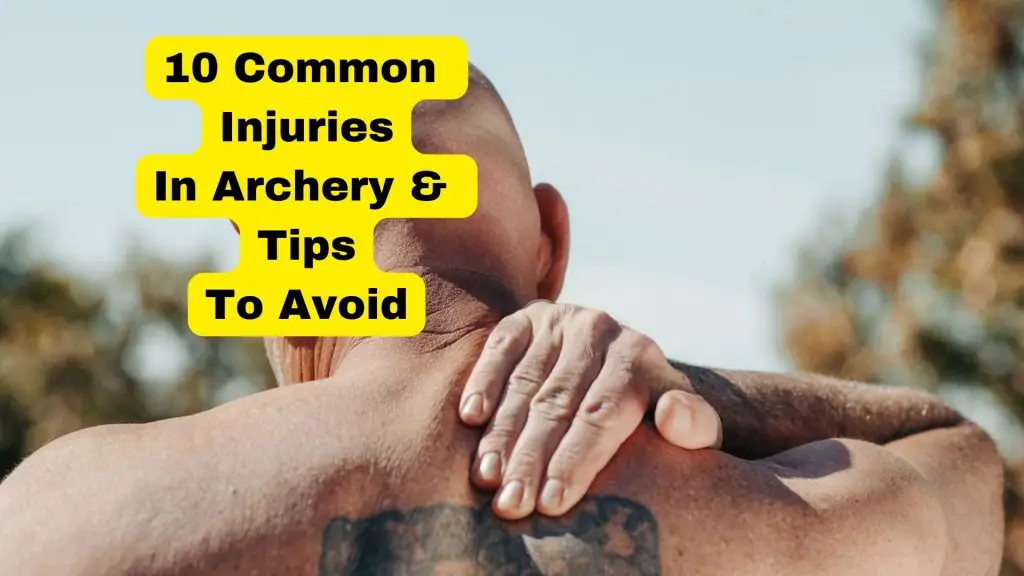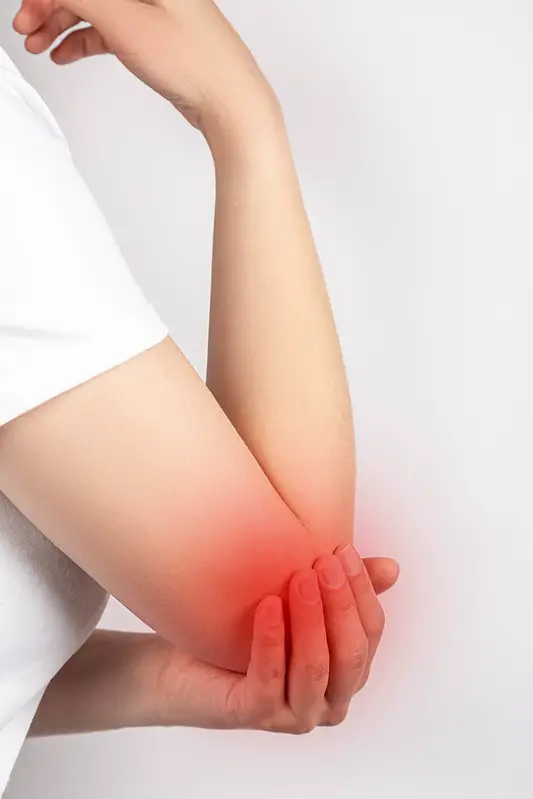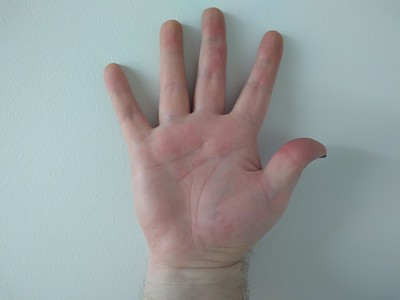10 Common Injuries In Archery: How To Avoid Them
Archery is an exciting and rewarding sport that requires skill, focus, and discipline. However, like any physical activity, it comes with its own set of risks and potential injuries.
The repetitive nature of drawing and releasing a bow can cause strain and stress on the body, leading to various injuries.

Some Injuries related to Archery
Shoulder injuries are common in archery due to repetitive use of the shoulder muscles. Also, From trigger finger and rotator cuff injuries to clavicle impingement, archers can suffer from a range of ailments that can hinder their performance and even prevent them from shooting altogether.
In this topic, we will explore the most common injuries in archery and provide tips on how to avoid them, so you can continue to enjoy this beloved sport safely and injury-free.
DISCLAIMER: Please note that at binocularsguru, we are not medical professionals. The information provided on this platform is solely based on our personal experiences and research, and should not be taken as medical advice. It is always recommended to consult a medical practitioner if you sustain an injury while engaging in any sport.
Common Injuries In Archery
Below are some of the most common injuries in archery:
A. Shoulder Injuries
1. Rotator cuff injuries:
The rotator cuff is a group of muscles and tendons that help stabilize the shoulder joint. Repeated use of the shoulder muscles during archery can cause small tears in the rotator cuff, leading to pain and weakness in the shoulder.
2. Biceps tendonitis:
Biceps tendonitis is an inflammation of the biceps tendon that connects the biceps muscle to the shoulder joint. It can be caused by overuse or repetitive motion, such as that used in archery.
How To Avoid Shoulder Injuries
To avoid shoulder injuries in archery, it is important to use proper technique and form when drawing the bow.
This includes using the correct muscle groups and avoiding overuse of the shoulder muscles. It is also important to use appropriate equipment and ensure that it is properly fitted and adjusted.
Strengthening exercises for the shoulder and scapular muscles can also be helpful in preventing shoulder injuries. These exercises can be done in the gym or with simple equipment such as resistance bands.
To avoid rotator cuff injuries, it is important to choose a comfortable stance and use the proper bow-drawing technique. Certain archery stances may increase the risk of developing rotator cuff injuries, so it’s important to choose a stance that feels comfortable and natural for your body. Also, Regularly exercising your rotator cuffs can help strengthen the muscles and prevent injury.
Taking breaks during archery sessions and allowing for proper rest and recovery time can also help prevent shoulder injuries. It is important to listen to your body and avoid pushing through pain or discomfort.
3. Draw Arm Injury:
The drawing arm shoulder is the shoulder that is used to pull the bowstring back while shooting a bow in archery.
Archery can cause asymmetrical stress on the shoulder structures, particularly on the drawing arm shoulder. This means that injuries are more likely to occur on the drawing arm than on other parts of the body.
How To Avoid
To prevent these injuries, we recommend that archers should take care of their drawing arm shoulder by performing warming up and cooling down exercises before and after practice.
These exercises help to prepare the shoulder muscles for the stress of drawing the bow and also aid in reducing the risk of injury.
4. Impingement of the clavicle
Impingement of the clavicle is a common injury related to drawing a bow. It occurs when the ends of the collar bone are pinched and put under stress while drawing the bow. This can happen on either the drawing or bow-holding side, resulting in a sharp, burning pain. Many people tend to start their draw by pointing the bow straight at the target or reaching too far forward, which can cause stress on the collar bone and drawing shoulder.
How to Avoid
To prevent clavicle stress, avoid starting your draw with the bow pointed directly at the target.
If you’re a right-handed shooter, start with your right hand slightly away from your body so that the arrow is angled to the left.
For left-handed shooters, start with your drawing hand further from your body than your bow hand. Engage in upper-body rotation and use true back tension to reduce the strain on your joints.
You can see the detailed explanation as in the video:
B. Elbow Injuries
5. Tendonitis Or Archer’s Elbow
Tennis elbow, or lateral epicondylitis, is a common form of tendonitis that affects the outer part of the elbow. Golfer’s elbow, or medial epicondylitis, is another form of tendonitis that affects the inner part of the elbow.
These injuries are caused by repetitive motion and overuse of the muscles and tendons in the forearm and elbow, which can be common in archery.

How To Avoid
To avoid tendonitis or archer’s elbow, it’s important to use proper technique and form.
This includes avoiding a death grip on the bow, keeping the elbow slightly bent during the draw, and using the correct draw weight for your strength level. Reducing your draw weight may be necessary if you find it difficult to maintain proper form while drawing your bow.
Additionally, it is crucial to strengthen the muscles that are involved in drawing and holding the bow, including the shoulder and scapular muscles, to reduce the risk of overloading the tendons.
In addition to practicing archery skills, incorporating gym exercises that target these muscle groups is crucial for injury prevention. In some cases, wearing a supportive brace or seeking medical attention may be necessary.
C. Wrist Injuries
6. Carpal tunnel syndrome:
Carpal tunnel syndrome is a condition where the median nerve in the wrist is compressed, causing pain, numbness, and tingling in the hand and fingers. In archery, it can be caused by repetitive motion, such as that used in drawing the bowstring.
How To Avoid
To avoid carpal tunnel syndrome in archery, it is important to use proper technique and form when drawing the bow. This includes using the correct muscle groups and avoiding overuse of the wrist muscles.
Additionally, taking breaks during archery sessions and allowing for proper rest and recovery time can also help prevent carpal tunnel syndrome. It is important to listen to your body and avoid pushing through pain or discomfort.
Strengthening exercises for the wrist and forearm muscles can also be helpful in preventing carpal tunnel syndrome. These exercises can be done in the gym or with simple equipment such as hand grippers or resistance bands.
If you are experiencing symptoms of carpal tunnel syndrome, it is important to seek medical attention. Your doctor may recommend wearing a wrist brace, taking over-the-counter pain relievers, or in some cases, surgery.
D. Hand Injuries
7. Trigger Thumb:
Trigger thumb or Trigger Finger is a condition that occurs when the tendons in the thumb become irritated, causing pain and difficulty in movement.
This is often caused by repetitive actions such as holding a bow in archery or performing mundane tasks at work that require hand use.
The tendons in the hands act like pulley systems, and repeated actions that bring on severe irritation can cause full-blown trigger thumb.
A trigger finger can be exacerbated by certain medical conditions, such as diabetes, gout, and rheumatoid arthritis.
How To Avoid Trigger Fingers
To prevent trigger fingers, use a bow release to evenly distribute tension and avoid extended use. Take breaks and try to limit hand movement.
Consider wearing a thumb splint to prevent thumb damage and don’t be ashamed to wear it, as it can help avoid trigger thumb.
While these methods may not completely protect against trigger thumb, they drastically lower the chance of getting it.
8. Calluses and blisters:
Archers commonly experience calluses and blisters on their fingers and hands from gripping the bow and drawing the string.
Calluses are hardened, thickened skin that forms due to repeated pressure or friction, while blisters are fluid-filled bumps that form due to repeated rubbing or pinching.
Calluses and blisters can be uncomfortable and painful and can affect an archer’s grip and accuracy. However, they can be prevented by using proper techniques and equipment.

How To Avoid
It is important to ensure that the bow grip fits comfortably in the hand, and that the fingers are placed correctly on the bowstring.
Also, blisters can be prevented by using proper technique and wearing protective gloves or finger tabs.
Check: Gloves in Archery
A finger tab, a thin piece of leather or synthetic material that is placed between the fingers and the bowstring, can help protect the fingers and reduce friction.
In addition to using proper technique and equipment, it is important to maintain good hand hygiene and keep the hands moisturized to prevent excessive dryness or cracking.
Applying a moisturizer or hand lotion regularly can help keep the skin supple and reduce the likelihood of calluses and blisters forming.
Arm Injuries
9. String Slap
A string slap is a common injury that can occur during archery when the bowstring hits the archer’s forearm upon release of the arrow. This can happen because of improper technique or a poorly fitted bow.
Why String Slap Happens & How To Avoid
When the bowstring is drawn back, it creates tension that can cause the forearm to be pulled forward into the path of the bowstring. If the bowstring comes into contact with the forearm upon release, it can cause bruising, swelling, and pain.
To avoid a string slap, archers should take steps to ensure that their technique is correct and that their bow is fitted properly. This may include adjusting the grip on the bow, using an arm guard, and making sure the bowstring is properly aligned with the archer’s arm.
Another common cause of string slap is improper form, particularly in the release of the arrow. Archers should focus on maintaining a consistent release, avoiding any sudden jerks or movements that can cause the forearm to move into the path of the bowstring.
10. Chest Bruising
Chest bruising can occur when the archer experiences a string slap, which happens when the bowstring hits the chest or breast area upon release. This can cause pain and bruising, and can be a result of improper form, such as leaning too far forward or not keeping the bow arm straight.
How To Avoid Chest Bruising
To avoid chest bruising from a string slap, it’s important to maintain proper form and technique when shooting. Keep the bow arm straight and the bowstring away from the chest. Some archers may also choose to wear protective gear, such as a chest guard or padded clothing, to minimize the impact of a string slap.
General Causes of Archery Injuries
Archery is a sport that requires proper form, technique, and conditioning to avoid injuries. The following are the common causes of archery injuries:
A. Poor technique
One of the primary causes of archery injuries is poor technique. Archers who do not use proper form and technique are at risk of injuring themselves. For example, improper shoulder alignment during the draw can cause rotator cuff injuries. In addition, improper release of the arrow can lead to wrist and elbow injuries.
B. Overuse and repetitive motion
Overuse and repetitive motion are also common causes of archery injuries. Archers who practice frequently and for long periods of time without taking breaks are at risk of developing injuries such as biceps tendonitis and tennis elbow. This is because these injuries are caused by repetitive motion and overuse of the muscles.
C. Lack of conditioning and stretching
Archers who do not condition their bodies and stretch before practicing or competing are at risk of injuries. Proper conditioning helps to build strength and endurance while stretching helps to prevent injuries such as carpal tunnel syndrome and De Quervain’s tenosynovitis.
D. Equipment issues
Lastly, equipment issues can also cause injuries in archery. For example, arrows that are too stiff or too weak can cause the bow to malfunction, which can lead to injuries. In addition, a poorly fitted bow or string can cause hand injuries such as blisters and trigger finger.
Additional Tip For Prevention of Archery Injuries
A. Proper technique and form
- Proper technique and form are essential in avoiding archery injuries.
- Beginners should take lessons from certified instructors to learn the correct posture, grip, and stance.
- Practicing proper form consistently can help prevent injuries caused by poor technique.
B. Regular conditioning and stretching
- Regular conditioning and stretching can help prevent injuries caused by overuse and repetitive motion.
- Strengthening exercises for the shoulders, arms, and back can help improve overall muscle stability, reducing the risk of injury.
- Stretching before and after archery sessions can also help prevent muscle strain.
C. Appropriate equipment selection and maintenance
- Selecting appropriate equipment that suits the archer’s size, strength, and skill level can help prevent injuries caused by equipment issues.
- Proper maintenance of the equipment, such as tightening loose screws or replacing worn-out strings, can also help prevent accidents.
D. Rest and recovery
- Taking rest breaks between practice sessions can help prevent overuse injuries.
- Archers should listen to their bodies and rest when they feel fatigued or experience pain.
- Adequate rest and recovery time allows the body to heal and prevents further injury.
Conclusion
As an archer, it is important to understand the risks associated with this sport and take steps to prevent injuries.
Preventing archery injuries is possible by improving your stance and draw technique, avoiding excessive use of your shoulder and arm muscles, using an appropriate bow weight, and regularly exercising the muscles used in archery.
Moreover, selecting appropriate equipment and maintaining it properly, and taking time for rest and recovery are some other aspects to be kept in mind.
By following the tips mentioned earlier, you can mitigate the risks associated with archery and enjoy the sport safely.
Remember to always prioritize safety, listen to your body, and seek medical attention if needed.
